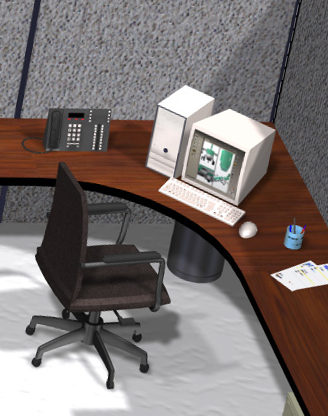Augmented offices visible on virtual horizon
 Some enterprising technologists are beginning to bring augmented reality to the everyday workplace, with research showing the office of the future could be right before our eyes.
Some enterprising technologists are beginning to bring augmented reality to the everyday workplace, with research showing the office of the future could be right before our eyes.
A report released by research firm Gartner suggests we may soon see wearable screens become commonplace at work, with better computer and mobile phone integration as well.
Gartner says it expects to see ‘moderate’ adoption of augmented reality (AR) technology over the next five years.
“Although the adoption of augmented reality in the enterprise is still in its infancy, AR technology has matured to a point where organisations can use it as an internal tool to complement and enhance business processes, workflows and employee training,” the report said.
Many workers and workplaces could benefit from a technological step up.
On the easier end, there are advantages to be gained by producing an office or company-specific mobile phone application. This might allow management to communicate with workers in a more personal and direct manner and keep all users connected and up to date.
Greater advances down the track could involve displaying relevant information, updated work orders or safety warnings on head-mounted displays. The Gartner paper says this could boost productivity and keep staff out of danger.
The report divides the implementation of AR technology into two categories. The first are location-based innovations, where a device uses sensors to provide information based on a user’s location. The second avenue is dubbed ‘computer vision’; where tracking sensors identify an object and provide information on it, such as character or danger recognition.
“AR is most useful as a tool in industries where workers are either in the field, do not have immediate access to information, or jobs that require one or both hands and the operator’s attention,” said Tuong Huy Nguyen, principal research analyst at Gartner.
He sees knowledge-based industries taking on new tech first.
“As such, the impact on weightless industries is lower because these employees often have constant and direct access to the information they need.”
More information is available in the complete report, accessible here.







 Print
Print